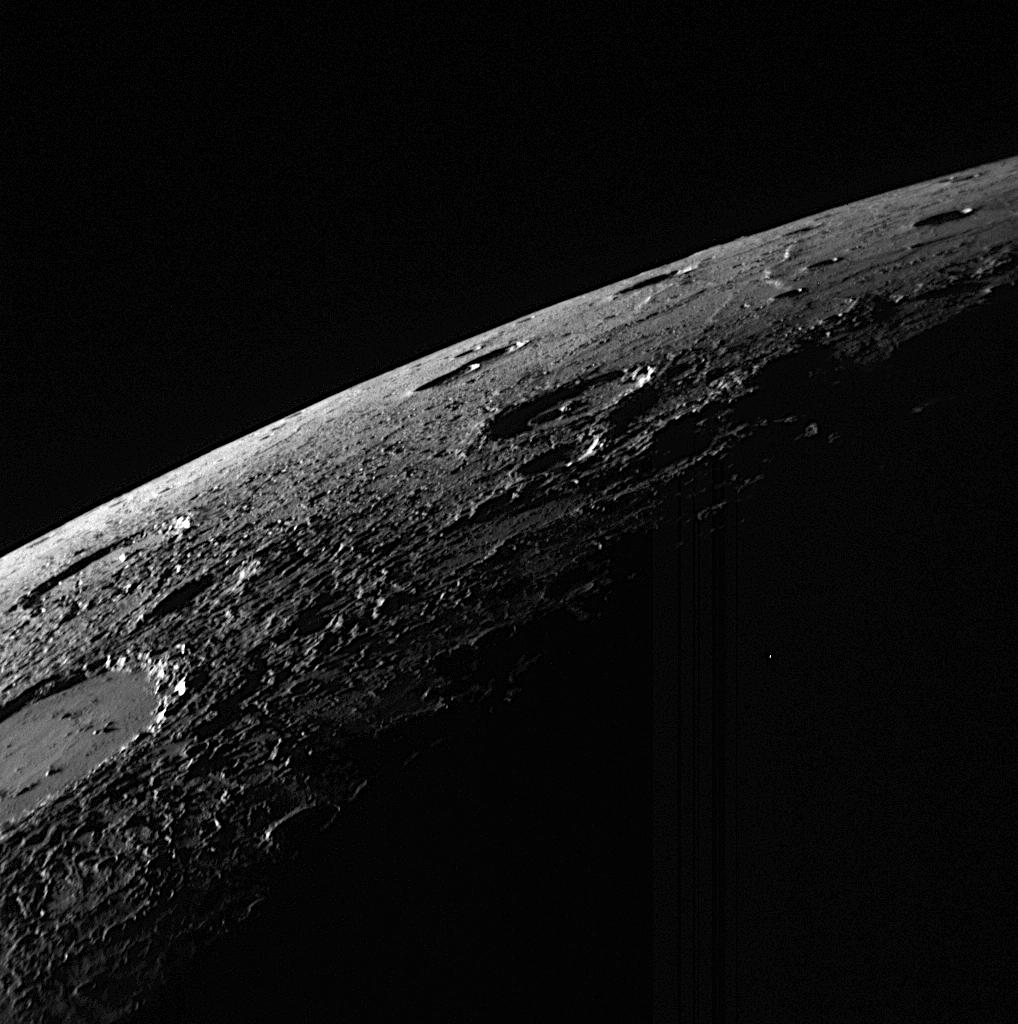
NASA / JPL-Caltech
Data on Mercury collected by NASA’s Messenger orbiter continue to yield new results long after the end of the mission in 2015. In the latest and perhaps most surprising result, scientists have used Messenger data to discover salt glaciers on the baked planet’s surface. New evidence suggests the subsurface layers are rich in volatiles, which might once have created habitable conditions — and the same might be true on Mercury-like exoplanets.
Mercury is covered in enigmatic surface areas known as chaos terrain, where different layers are scrambled together. Initially, planetary scientists thought the chaos terrains might trace their origin back to the impact of a 100-kilometer (60-mile) asteroid, which formed the vast Caloris basin about 3.8 billion years ago.
However, a 2020 study of Messenger data used crater counts to determine that some chaos terrains formed as recently as 2 billion years ago, long after the Caloris impact. The scientists also discovered that some chaos areas had sunk more than two kilometers, deeper than an impact could have caused.
Other studies revealed surprising amounts of sulfur, chlorine, and potassium, which are volatiles on Sun-scorched Mercury. Volatiles will quickly turn to gas when exposed, and when they sublimate, they leave shallow hollows tens of meters deep. Data has also previously shown water ice frozen in permanently shadowed polar craters.

NASA / JHU APL / Carnegie Inst. of Washington
Now, a team led by Alexis Rodriguez (now at NASA’s Marshall Space Flight Center), who also led the 2020 study, reports new findings in the November Planetary Science Journal. To the researchers’ surprise, they found that chaos terrains might host salt glaciers.
What’s more, subsurface volatile layers are widely distributed. Rodriguez argues that it’s the evaporation of these volatiles that both created the salt glaciers as well as led to surface collapses, which in turn created the chaos terrains.

NASA
“When we think of glaciers you immediately think of water ice,” Rodriguez says. However, salt glaciers can form on Earth, too, in areas like the Zagros Mountains of Iran. Terrestrial salt glaciers start as halite deposits left behind as ancient oceans evaporated. Other rocks later covered those deposits in layers massive enough to squeeze the salt deposits. Over time, halite and other salts seep upward through cracks, emerging as surface glaciers. “The glaciers of Mercury are most likely composed of halite,” says Rodriguez.
Mercury’s Early History
In the new study, Rodriguez’s group outlines their interpretation of the planet’s history.
He says the oldest layer they can observe, which lies within the chaos regions, is a heavily cratered surface that formed well over 4 billion years ago, when planetesimals were still crashing into the inner planets. Those impacts heated the old layer, releasing volatiles to form a thick primordial atmosphere on the innermost planet.
As Mercury cooled, volatiles like chlorine, sulfur, and potassium condensed out and fell to the surface, depositing a layer of solid halite which Messenger observed to be about 2 kilometers thick.
A period known as the Late Heavy Bombardment followed, 3.9 to 3.8 billion years ago, during which a barrage of impacts hit Mercury, the biggest of which was the massive Caloris impact. The disruptions continued until about 2 billion years ago, vaporizing volatiles, spreading lava, and scrambling the surface to create the chaos terrain. Some rock surfaces sank up to 2 kilometers as volatiles beneath them were vaporized. Today, surfaces in the chaos terrains are a complex mixture covered with volcanic eruptions, exposed areas of volatile-rich glaciers, and other rocks where exposed volatiles continue evaporating.
Halides (a class of minerals that includes halite) are known to retain water, leading Rodriguez to wonder if some parts of a Mercury-like planet orbiting another star might habitable.
“We’re not saying we think there was life on Mercury,” he clarifies. But he does think it’s likely that life-friendly conditions could once have existed in some regions on the planet, or on Mercury-like exoplanets.
Usually, the “Goldilocks zone,” the region in which a planet is considered able to support life, is defined by its distance from the star it orbits. But Rodriguez argues that in cases such as Mercury, the crucial factor determining habitability might not be distance from the host star but rather depth below the surface.
“The surface of Mercury is extremely hot during the daytime, but just a few meters below the surface it’s cooler,” he says. He points out that deep within the halite layers, conditions could have been right for water to exist.
The Way Forward
“This paper provides food for thought about Mercury and presents a very different picture of the history of its surface than that of the broiling hot volcanic world that prevailed prior to the Messenger mission,” says Clark Chapman (Southwest Research Institute).
But Chapman also points out, “actual evidence from Messenger is largely lacking concerning Mercury’s very early history.” We should learn much more when the European BepiColombo mission enters orbit around Mercury in December 2025.
Rodriguez is now looking at how the solar wind might interact with chaos terrains. In the longer term, he says landing a spacecraft on Mercury’s surface “could answer a lot of questions” about evolution of the planet. But he admits such a mission would require overcoming significant engineering challenges.
